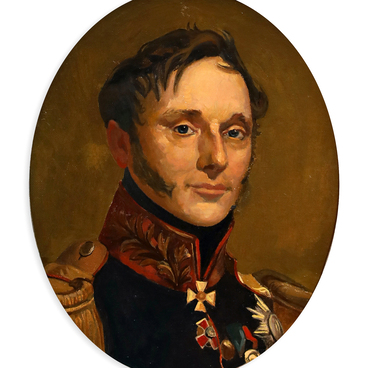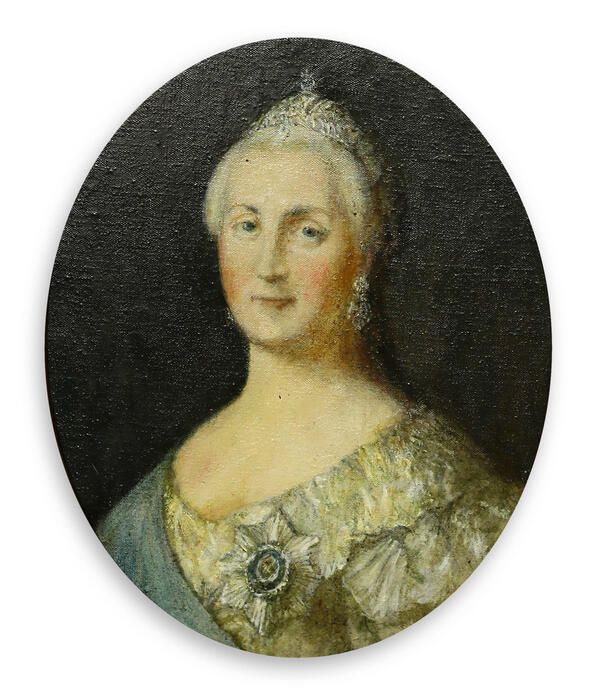This portrait of Nicholas I is a free interpretation by Vladimir Anatolyevich Yefaritsky. The original painting was created by the German artist Franz Krüger in 1852.
Grand Duke Nikolay Pavlovich, the future Emperor Nicholas I, developed an interest in military art, fortifications, engineering, and architecture when he was still a child.
In 1816, Nikolay Pavlovich made several trips to different regions of the Russian Empire to gain an understanding of the current situation and issues. Around the same time, he also visited England.
In 1817, the future emperor married Princess Friederike Luise Charlotte Wilhelmine of Prussia. After her conversion to Orthodoxy, she became known as Alexandra Feodorovna.
During the 30-year reign of Nicholas I, the Russian Empire significantly expanded its territory by integrating vast territories in the Caucasus, Central Asia, and the Far East. In 1845, the emperor ordered the establishment of the Russian Geographical Society in St. Petersburg. In 1846, he signed the charter of the Imperial Yacht Club in St. Petersburg, which became the first official yacht club in the Russian Empire.
As for the foreign policy, Nicholas I declared his intention of resolving the so-called Eastern Question — the struggle against the Ottoman Empire over the Black Sea coast, the Bosphorus and Dardanelles Straits, and the liberation of the Orthodox population of the Balkans from Ottoman rule. In 1826, Russia and Great Britain signed a protocol in St. Petersburg on joint actions in resolving the Greek question. This document was the first major diplomatic victory for the Russian emperor and formed the basis for the Treaty of London in 1827.
Victories over Turkish troops in 1828–1829 allowed Russia to significantly weaken Turkey and integrate a number of territories on the Black Sea coast and in the Caucasus. This also strengthened the Russian Black Sea fleet. In September 1829, Russia and the Ottoman Empire signed the Treaty of Adrianople. In October 1853, the Crimean War of 1853–1856 began, which exposed the military and economic underdevelopment of the Russian Empire. This forced the government to conduct reforms in the 1860s and 1870s.
Emperor Nicholas I died on March 2, 1855, in St.
Petersburg and was buried in the Peter and Paul Cathedral.






